When it comes to automotive care, few products are as essential as car polish. But with so many polish types available, especially with distinct needs for classic cars versus modern vehicles, selecting the right one can be a bit overwhelming.
In this blog, we’ll break down the best options for both classic car polish and modern automotive polish, so you can make an informed decision based on your vehicle’s needs.
Understanding the Role of Car Polish
Before diving into specific types, it’s important to understand what car polish does. At its core, car polish is designed to:
- Restore the shine and depth of your car’s paint
- Remove fine scratches and swirl marks
- Enhance color depth by smoothing the surface and reflecting light
Polish is different from wax or sealant in that it is primarily used for abrasive correction, whereas wax is meant to add a protective layer over the finish.
Classic Car Polish: Tailored for Vintage Finishes
When it comes to classic cars, the paint finish is often more delicate, and the original layer of paint may have aged over time. Using a classic car polish formulated specifically for vintage vehicles is crucial, as it’s designed to work gently on older paintwork without causing further damage.
Look for:
- Non-abrasive formulas: These are ideal for classic car care, as they won’t damage fragile, original finishes.
- Paint restorer polishes: These polishes will help remove oxidation, which is common in older vehicles, and restore the paint’s natural shine.
- Cream-based polishes: These are often used for older vehicles because they’re smoother and easier on delicate surfaces.
Some of the best classic car polishes are designed to preserve the authenticity of the car’s original paint, without stripping away valuable layers.
Modern Automotive Polish: High-Gloss and Long-Lasting Shine
Modern vehicles have much more durable paint finishes, often made from clear coats that protect the underlying color. As a result, automotive polish for newer cars can be slightly more abrasive and designed to achieve a high-gloss shine.
Look for:
- All-in-one polish formulas: These products provide both polishing and light cleaning abilities, ideal for newer cars that don’t have significant damage.
- Polymer or synthetic-based polishes: These can provide longer-lasting results and are designed to work with clear coat finishes, offering protection as well as gloss enhancement.
- Quick detailers: These are perfect for maintaining the shine between full polishing sessions. They’re easy to apply and great for daily use on your modern car.
Modern automotive polishes typically provide a mirror-like finish with the added bonus of offering protection against environmental elements like dirt, water, and UV rays.
Choosing Between Wax, Polish, and Sealants
While car polish helps to correct and restore your car’s finish, it’s important to understand the difference between polish, wax, and sealants:
- Polish: Used for improving the paint’s appearance by removing imperfections and restoring shine.
- Wax: Provides a protective layer over the paint, helping to lock in the shine and add water resistance.
- Sealants: Synthetic alternatives to wax, offering longer-lasting protection against environmental damage.
For classic cars, you might use a gentle polish followed by a wax to seal in the restored shine. For modern cars, you might opt for a combination of polish and sealant to give your car a high-gloss finish that lasts longer.
How to Apply Car Polish: Best Practices for a Professional Finish
Regardless of whether you’re working with a classic car polish or a modern automotive vehicle polish, application is key to achieving the best results. Here are a few steps to follow:
- Clean the car thoroughly: Before applying any polish, wash the car to remove dirt and debris that could scratch the surface.
- Use a soft applicator pad: Apply the polish using a microfiber pad to avoid scratching the paint.
- Work in sections: Apply polish to one section of the car at a time, using circular motions to ensure even coverage.
- Buff with a microfiber cloth: Once the polish has dried to a haze, buff it off with a clean microfiber cloth to reveal the shine.
For both classic and modern cars, it’s important to follow the instructions on the polish container for the best results.
Finding the Right Car Polish for Your Vehicle
The best car polish for your vehicle depends on its condition, age, and the type of finish. Here’s a quick breakdown:
- For Classic Cars: Choose non-abrasive formulas, restorer polishes, and cream-based products that work gently on older, delicate finishes.
- For Modern Cars: Opt for abrasive polishes that can deliver a high-gloss shine and long-lasting protection, particularly on clear-coat finishes.
Conclusion
Choosing the right car polish for your vehicle is essential for maintaining its appearance and longevity. Whether you’re restoring a classic car or enhancing the shine of your modern ride, there’s a perfect polish out there for every need.
By selecting the right classic car polish or automotive polish, following proper application techniques, and using the correct polishing tools, you’ll keep your vehicle looking as beautiful as the day it was first painted.


